CONTEXT (n.)
Posted on October 29, 2017Early 15c., from Latin contextus "a joining together," originally past participle of contexere "to weave together," from com "with, together" + texere "to weave, to make," from PIE root *teks- "to weave," also "to fabricate."
Evolution/Symbiosis/Revolution
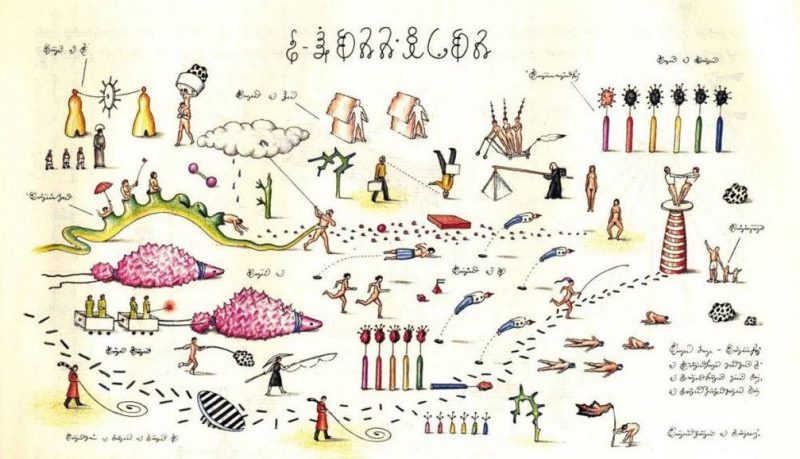
Serafini, Luigi; Codex Seraphinianus, 1981
Design and Technology have always been a part of human evolution.
Different versions of our species have been shaping our environment for long before we became Sapiens, and as such, we evolved bounded to nature for hundreds of thousands of years over a symbiotic relationship where we benefited from our environment without producing a negative impact¹.
This changed with the Agrarian Revolution, an event that re-defined what it meant to be human by changing the status quo of our relationship to nature and technology. We rapidly became a Parasitic organism feeding relentlessly from the environment while developing an increasingly Mutualistic relationship with technology.
Agriculture meant settling down. Food security increased the population, gave strength in numbers and allowed for an economy based on trading to develop amongst settlements. It also meant more hours of labor, keeping the system running was a hard, painful work, and since then, Design has played a crucial role in human development; We became no longer a species that evolved with nature, but a species that evolved bounded to the rate of technological progress. Design replaced natural selection with artificial selection.
As natural selection ceased to be a factor in human evolution, survival of the fittest in terms of strength and linear thinking was slowly becoming less needed. Instead, adaptability and cognitive plasticity became increasingly relevant to thrive in the fast-paced changing environment of urban development.
More than 10.000 years later, this time in the western hemisphere, England was having its own Agricultural revolution, which catalyzed the Industrial Revolution and established the role of Design as a tool to facilitate productivity. Less than a hundred years later in the aftermath of WWII, Design was finally consolidated as a tool for consumerism as it effectively pushed forward the capitalist agenda of the American Dream.
Today’s society is a product of design.
¹ Commensalistic relationship
The Extended Phenotype
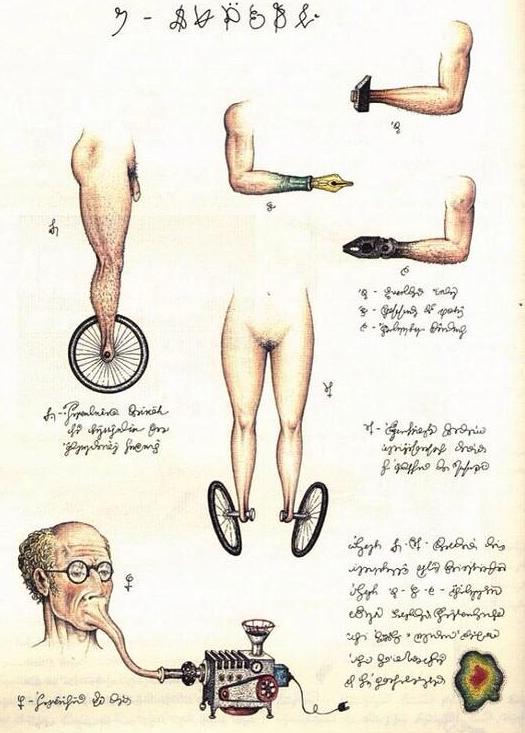
Serafini, Luigi; Codex Seraphinianus, 1981
I found an interesting exercise to apply this evolutionary concept from Richard Dawkins¹ to the current state of human evolution, where technology can be seen as an extension of our organisms perpetually modifying our environment, where Design plays a central role in how far out can we reach.
Networks are the best examples of the extended phenotype, where, in my opinion, the Internet is the most relevant network of our time. As human behavior is increasingly being influenced by Media and digital technologies to such point, I would argue, where we are becoming subject to a Pavlovian response-conditioning² that has systematically disconnected humans from our basic instincts and guided us into a path of unconscious consumerism and depletion of natural resources. A condition so rooted in our system that it might as well by now be another reflex of our autonomic nervous system.
But not all of our species has been victim to the over-exposure of media, and on the face of a democratization of the internet, the impact this technology will have in the rural, secluded and impoverished areas of the world can only be mitigated by re-designing what we see as technological progress.
¹ Dawkins, Richard; The Extended Phenotype, 1982 / ² Pavlov, Ivan; The Work of the Digestive Glands, 1897
Resilience
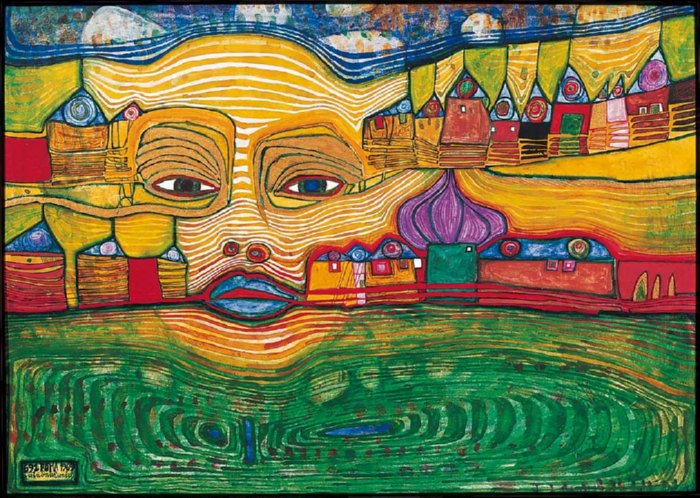
Hundertwasser; Irinaland Over the Balkans, 1969
As Designers, we have to tread carefully when near the hype for resilience.
If we look to nature, resilience¹ is not a term applied to what designers are striving to achieve today. Cities have become machines for capital accumulation², which translates to the most significant investments for environmental resilience being placed to preserve the very same that causes the need.
This idea of resilience undermines the concept of adaptability and perpetuates a corrupted notion of progress. I will even go as far as to suggest that we re-consider the implications of a resilient world capable of sustaining the soon to be 9 billion population and then more; this is the behavior of a parasitic organism.
The rate at which Humans spread is much a matter of Design as any other aspect of our [built] environment.
We must design to adapt, not to last.
¹ C.S. Holling / ² Dawson, Ashley; Extreme Cities, 2017
Time
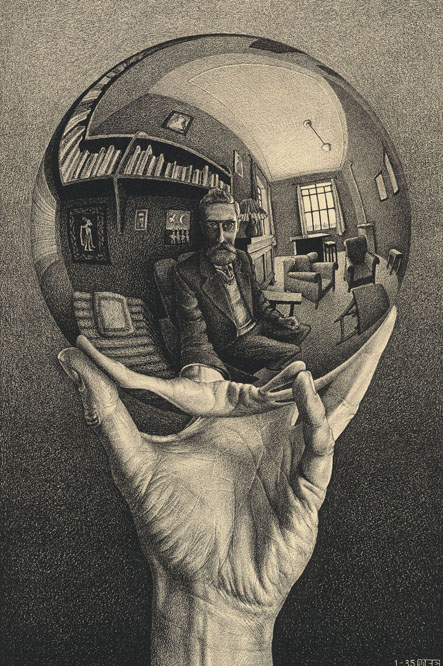
M.C. Escher; Hand with a Reflecting Sphere, 1935
When we think about design as a tool for change, prevention, planning, and modification, I believe it is essential to re-define our understanding and conceptions of time.
We have measured time accordingly to the individual for the past several thousands of years. Our notion of “time,” as brief as it is, has given us the concept of present; but is there a present anymore?
It’s arguable that technology has overwritten time. Humans have a very limited projection into the future, whereas the systems, infrastructure, and networks we design can be easily projected to survive the individual. Systems are resilient and adapt, and as systems increase self-sustainability, humans lose value. We no longer have a linear time; Our future is being shaped by the past, which is our present, being shaped by the future.
As such, Designers must be speculative and think in outcomes as non-linear.
Design is, therefore, both past and future, never present.
Micro (biome)
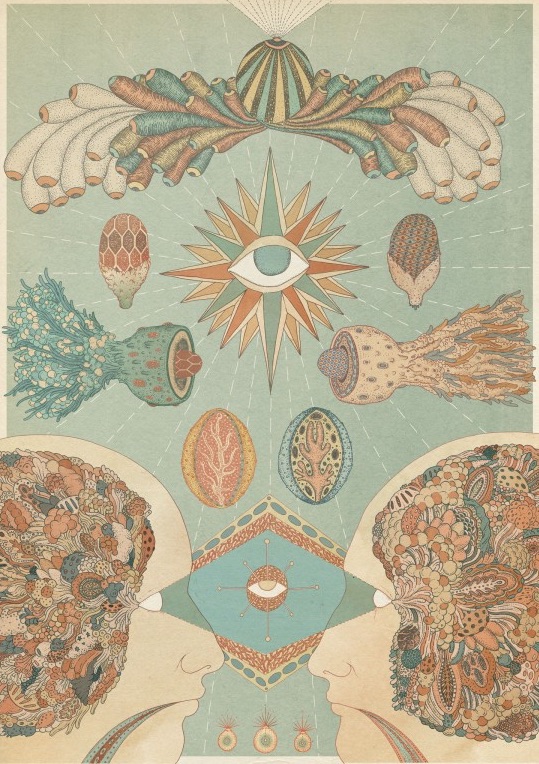
Scott, Katie; Vision, 2011
https://vimeo.com/139401358 (DIYSECT Episode #5 Hybrid Practices)
The Design field is increasingly looking towards nature with a more comprehensive approach that goes beyond the empty promises and hype of the early 2000’ sustainable design movement¹, as now designers are increasingly embracing the sciences in a period that slowly starts to resemble the years in between the Renaissance and the Scientific Revolution.
Nature is the ultimate designer; an autonomous system of renewable energy that builds upon itself, self-healing, ever expanding and the base of our existence, after all, we are in our most primitive form, Biotic, a mere consequence of [the] surplus energy in nature. Therefore, as Designers, we must look for inspiration into the world, both within us and around us.
An increasingly aware generation of designers can be the catalyst to reunite science and design to re-shape a commodified discipline that for too long has been focusing on the aesthetics and the consumer patterns of society.
But for that to happen, we must ignite that spark now by setting a clear precedent and refuse to continue advancing Design as a mass production discipline.
¹ Mostly marketing strategies of cradle to cradle, 3R and eco-design for big-corp that never scaled beyond press
Communication
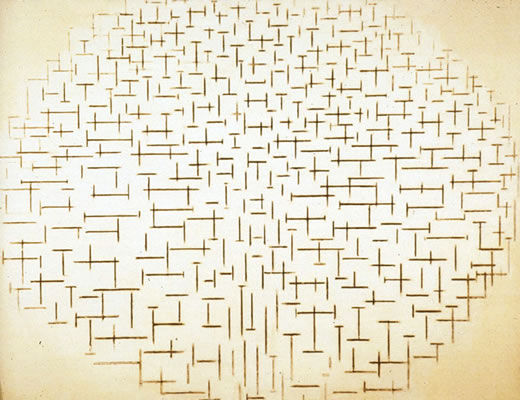
Mondrian; Composition 10 in Black and White, 1915
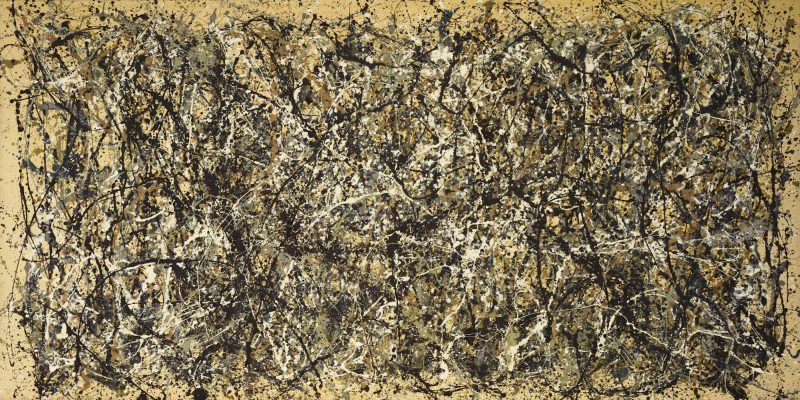
Pollock; One: Number 31, 1950
Lastly, Design is communication.
We communicate through our decisions, our choices as Designers can eco further than we usually acknowledge, but the sender-receiver relationship has been compromised by today’s oversaturated networks of information.
Too often we found ourselves reading through self-indulgent, over complicated, pseudo manifestos of designers using a language that can hardly be accessible to the masses, as if this attempt for achieving higher literary prose would secure them a place in the information transactions; and sadly, if this semester D4TC reading list is any indication, it kind of works like that.
When did (good) design become a product for the elites? Let’s not forget that as a species we are intrinsically all designers.
We owe equally to all levels of education and to all disciplines, to share our knowledge in a way that is accessible and comprehensible to all.
To become Design communicators, we must leave our egos aside. Big words don’t make good Designers.
The living organism, in a situation determined by the play of energy on the surface of the globe, ordinarily receives more energy than is necessary for maintaining life; the excess energy can be used for the growth of a system (e.g., an organism); if the system can no longer grow, or if the excess cannot be completely absorbed in its growth, it must necessarily be lost without profit; it must be spent, willingly or not, gloriously or catastrophically¹.
Humans are the excess energy.